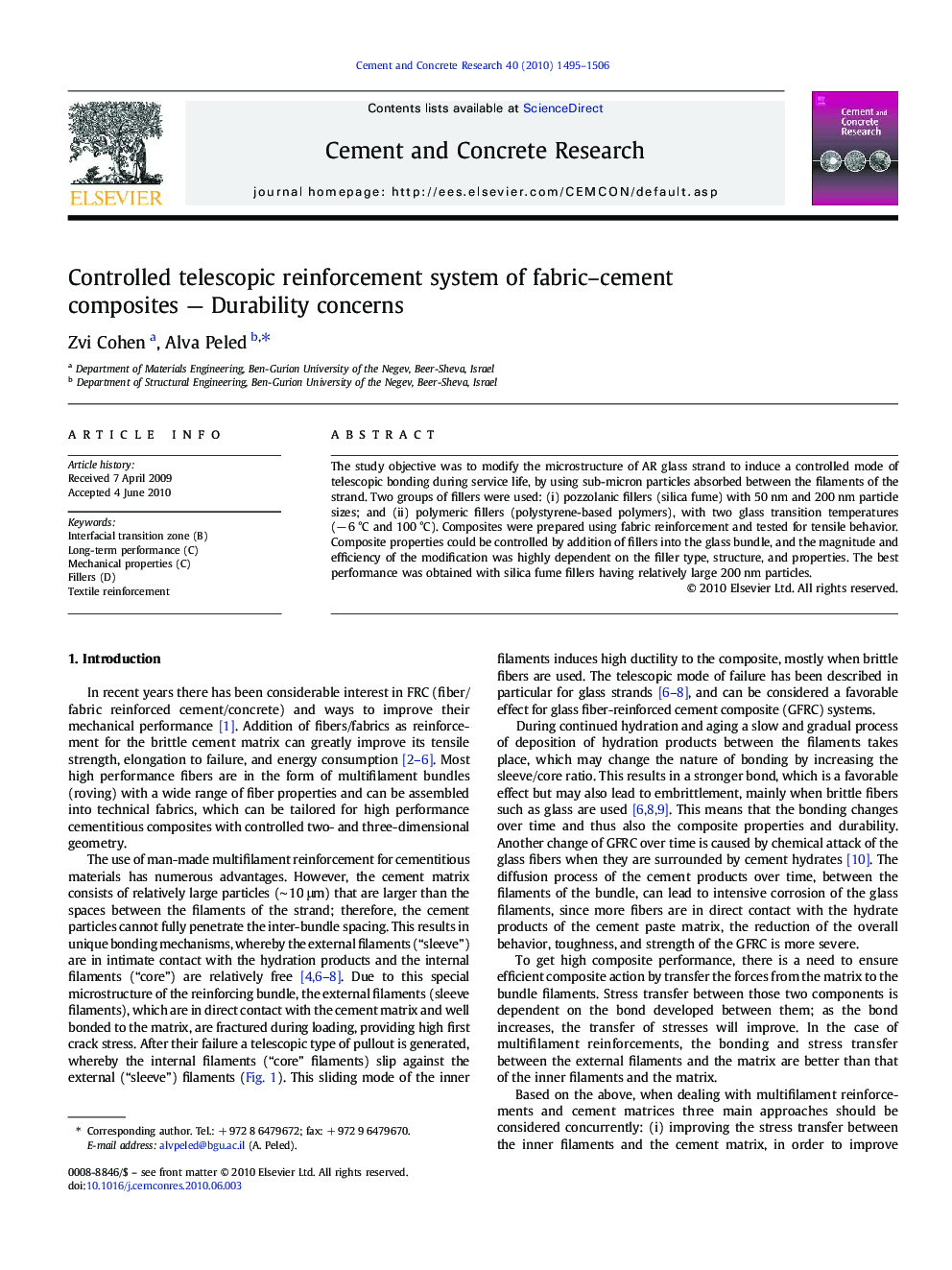| Article ID | Journal | Published Year | Pages | File Type |
|---|---|---|---|---|
| 1457099 | Cement and Concrete Research | 2010 | 12 Pages |
Abstract
The study objective was to modify the microstructure of AR glass strand to induce a controlled mode of telescopic bonding during service life, by using sub-micron particles absorbed between the filaments of the strand. Two groups of fillers were used: (i) pozzolanic fillers (silica fume) with 50 nm and 200 nm particle sizes; and (ii) polymeric fillers (polystyrene-based polymers), with two glass transition temperatures (â 6 °C and 100 °C). Composites were prepared using fabric reinforcement and tested for tensile behavior. Composite properties could be controlled by addition of fillers into the glass bundle, and the magnitude and efficiency of the modification was highly dependent on the filler type, structure, and properties. The best performance was obtained with silica fume fillers having relatively large 200 nm particles.
Keywords
Related Topics
Physical Sciences and Engineering
Engineering
Industrial and Manufacturing Engineering
Authors
Zvi Cohen, Alva Peled,
